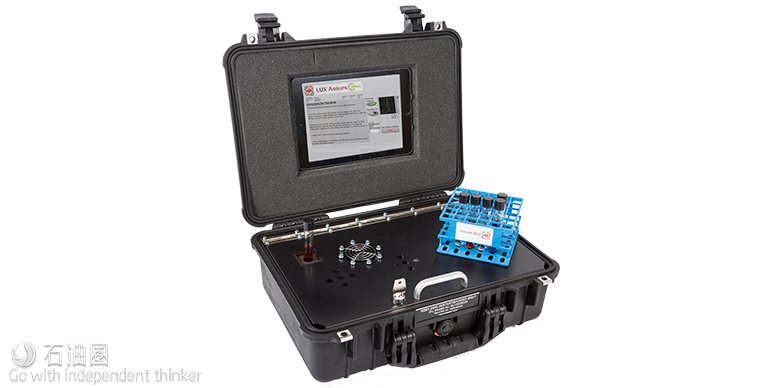LUX Assure’s CoMic technology is a corrosion inhibitor micelle detection tool that can be used in the field to help manage the long-term integrity of aging assets. It provides detailed information on corrosion inhibitor dose optimization based on micelle detectino in oilfield fluids, eliminating inaccuracies that can be caused by sample degradation. The technology ensures process optimization through the prevention of overdosing, which could cause emulsions and oil-in-water separation issues.
(1)Ensure optimal internal corrosion protection
(2)Maximise value and longevity of producing assets
(3)Save chemical costs on overdosed systems
(4)Improve operations, reduce system upsets
Optimum inhibitor dosage
Chemical corrosion inhibitors are routinely used to protect process equipment and pipeline infrastructure. It’s difficult to establish optimum dosage levels, as conditions can change rapidly in the field. While underdosing can increase the risk of corrosion, adding more inhibitor is not always a solution. That’s because surplus chemicals may offer no additional protection, and can cause emulsion build-up and complex separation issues which are time-consuming and expensive to resolve.
The answer
CoMic™ is revolutionary technology which provides information on optimal dosage of corrosion inhibitors. It’s a combined technology and service covering consumable markers, our customised equipment, and critical data analysis. It provides significantly increased risk assurance in relation to internal corrosion, premature loss of containment and life extension. In our opinion, you can’t afford to be without it.
Meet the micelle
A micelle is a nanoscale cluster of corrosion inhibitor floating around in fluid. They form at the Critical Micelle Concentration (CMC). In oilfield systems, micelles form when every surface in the pipe structure has been coated, and the inhibitor starts to group together. The ideal functional dose of corrosion inhibitors is therefore the point where micelles begin to form in a system, but before there are too many. CoMic™ is the only readily available technology for accurately measuring corrosion inhibitor micelles in the field.
How it’s used
CoMic™ is used on-site, avoiding sample degradation caused in transit. The process is simple – a water sample is mixed with a marker and analysed with our proprietary instrument. Data is transmitted to LUX Assure where our personnel further perform the analysis, providing a detailed service report highlighting key recommendations leading to informed management decisions.
Case study
Infrastructure: Onshore crude oil production facility
Task: Method required to determine if the wetting agent was being applied at a dose offering optimal corrosion protection
Outcome: CoMic™ provided valuable dose information for asset integrity management
Background
An onshore US facility producing high levels of corrosive H2S in the crude extraction process, required chemical optimisation. Traditional film-forming corrosion inhibitors were ineffective against the highly corrosive H2S, leading the operator to use a ‘wetting agent’ in order to prevent iron sulphide build up. Wetting agents have similar characteristics to film-forming corrosion inhibitors, forming micelles when the ‘Critical Micelle Concentration’ has been achieved. The use of CoMic™ to determine micelle presence was required at this production facility to inform optimal chemical management.
Testing
CoMic™ was performed on samples onsite to determine micelle presence and the wetting agent dose rate was altered according to the results. The analysis showed that when a dose rate of 110 ppm was being applied to the system there was evidence of micelles, providing confidence that the system was well dosed. The wetting agent dose was then reduced to determine if too much product was being applied. As the results show (graph shown in case study download), reducing the dose rate resulted in a loss of micelle signal, indicating there was limited scope to reduce the dosage and still provide optimal protection.
Summary
Onsite CoMic™ testing afforded near real-time results to be achieved, giving confidence that the system in question was at an optimal dose rate when 110 ppm of the wetting agent was being applied. A recommendation was made that this dose rate should be maintained for optimal protection. This information was then fed into a corrosion management review.

 石油圈
石油圈


